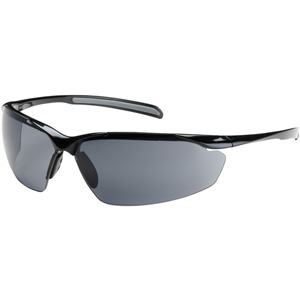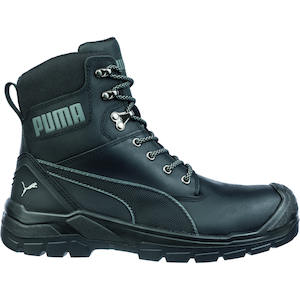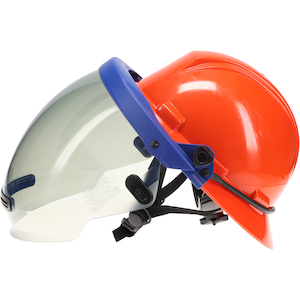Power distribution is the final stage in the delivery of electricity from power generation plants to homes, businesses, and other end-users. It involves the transmission of electrical energy through substations, transformers, and high-voltage transmission lines, distributing it to various locations for use. The hazards in power distribution are numerous and can be life-threatening, making proper personal protective equipment (PPE) crucial for ensuring the safety of workers in this sector.
The risk of electrical shock due to high-voltage lines and equipment is ever-present. Workers must wear insulating gloves and rubber insulating matting to protect themselves when working near live electrical systems. These gloves are designed to prevent electrical current from passing through the body, offering a critical layer of protection while handling or operating electrical components. For extra protection, rubber sleeves are often worn to protect the arms from electrical contact, particularly in situations involving overhead lines or transformers.
Arc flash incidents, caused by an electrical fault or short circuit, are another significant danger in power distribution. Arc flash suits provide protection from the intense heat, light, and flying molten metal generated during such an event. These suits are typically made from flame-resistant materials, which can withstand the extreme temperatures and prevent serious burns. Along with arc flash suits, workers also wear face shields and safety glasses to protect their faces and eyes from the potential flash and flying debris.
When working at heights in power distribution, advanced head protection is critical for preventing head injuries. Workers are often required to climb poles, towers, or ladders to reach high-voltage lines or substations. Advanced safety helmets, designed with impact resistance and additional features like chin straps and face shields, offer protection from falling debris, electrical contact, and other hazards. These helmets provide a robust defense against accidental head injuries, particularly in challenging environments such as outdoor power lines or crowded substations.
In addition to head protection, arc rated clothing is necessary for workers who may be exposed to arc flashes or electrical fires. AR coveralls, jackets, jeans, and shirts protect against burns caused by electrical failures or equipment malfunctions. Hearing protection is also essential, as the operation of transformers and other power distribution equipment generates high noise levels, which can lead to hearing damage if not properly mitigated.
Beyond electrical hazards, workers in power distribution are also exposed to environmental conditions such as extreme temperatures, rain, and wind. Weather-resistant PPE, such as arc rated rain jackets, insulated clothing, and high-visibility vests, are important for ensuring worker safety in such conditions. Visibility is a key consideration in power distribution, as workers often operate in low-light conditions or busy environments. High-visibility gear ensures they are seen by others, preventing accidents and improving overall safety.
Finally, respiratory protection is critical when working in areas where dust, fumes, or chemicals may be present. Respirators or dust masks protect workers from inhaling harmful particles or vapors, particularly in substations or when working on power lines where hazardous materials could be encountered.
In power distribution, the combination of electrical safety, advanced head protection, environmental considerations, and specialized PPE ensures that workers are protected from the diverse hazards they face. Adhering to established safety protocols and using proper PPE not only safeguards the workers’ well-being but also ensures the reliability and efficiency of the power distribution network. By providing effective PPE and following safety standards set by organizations like OSHA and NFPA, power distribution companies can create a safer working environment and minimize the risks that come with handling high-voltage systems.
View more about Power Distribution

 General Purpose Gloves - CoatedMaxiFlex® Ultimate™34-874
General Purpose Gloves - CoatedMaxiFlex® Ultimate™34-874
 Cut Resistant GlovesMaxiFlex® Cut™34-8743
Cut Resistant GlovesMaxiFlex® Cut™34-8743
 Extended Use Disposable GlovesGrippaz™ Engage67-307
Extended Use Disposable GlovesGrippaz™ Engage67-307
 Safety HelmetsTraverse™280-HP1491RVM
Safety HelmetsTraverse™280-HP1491RVM
 Safety HelmetsKilimanjaro™280-HP642R-CH
Safety HelmetsKilimanjaro™280-HP642R-CH
 Hi Performance GloveBoss®9916
Hi Performance GloveBoss®9916
 Arc Protection KitsPIP®9150-52436
Arc Protection KitsPIP®9150-52436
 Safety HelmetsTraverse™280-HP1491RM
Safety HelmetsTraverse™280-HP1491RM
 Hi Performance GloveBoss® XtremeKS993KOAB
Hi Performance GloveBoss® XtremeKS993KOAB
 Protection From ColdG-Tek® PolyKor®41-8035
Protection From ColdG-Tek® PolyKor®41-8035
 Extended Use Disposable GlovesGrippaz™ Skins67-246
Extended Use Disposable GlovesGrippaz™ Skins67-246
 Hi-Vis Cold GearPIP®343-1756
Hi-Vis Cold GearPIP®343-1756




















 (3).jpg)



















































 PIP®
PIP®

 Commander™
Commander™
 Kilimanjaro™
Kilimanjaro™
 v2™
v2™


 PUMA® Safety
PUMA® Safety


















